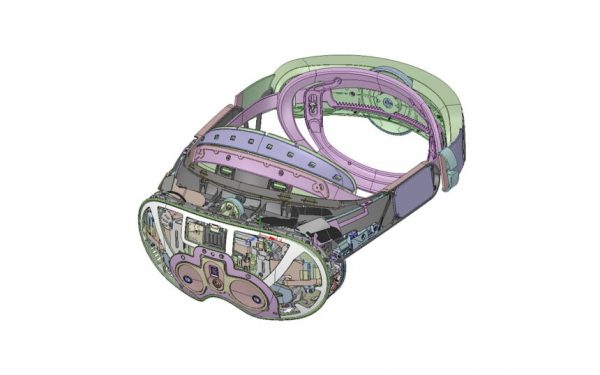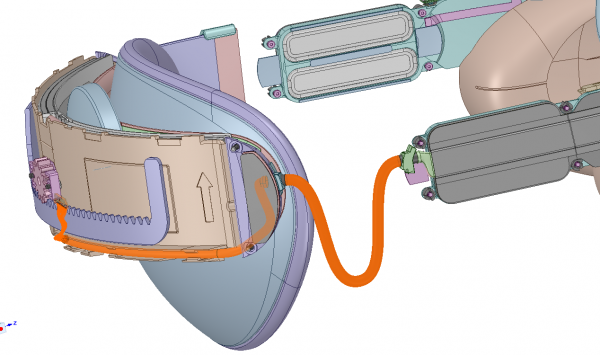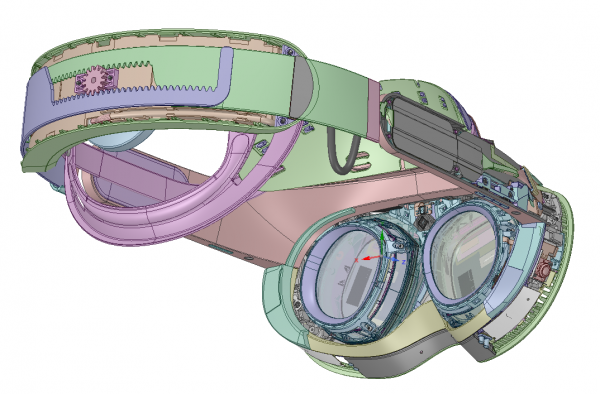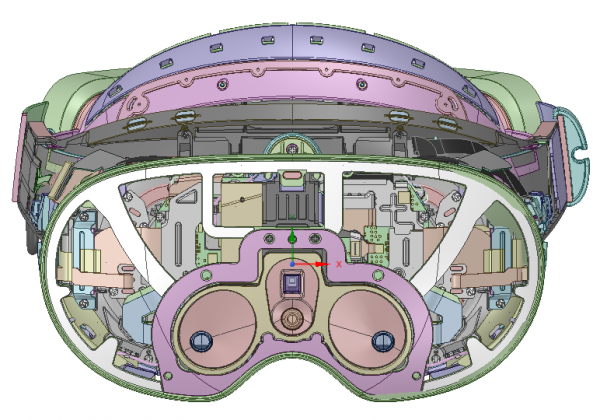Alleged Leaked Schematics for Project Cambria Headset Provide Fresh Tech Details
Meta has been pretty tight-lipped when it comes to its upcoming high-end Project Cambria headset which has a color AR passthrough feature. In the few demos it has provided so far, the headset is usually blurred. However, new schematics (which look like Project Cambria CAD files) now offer greater insights into the technical details of the headset.

The technical drawings of the headset were published by YouTuber and VR analyst SadlyItsBradley (Brad Lynch). The bare-bones look provides plenty to glean on what is under the hood of the headset.
These schematics are supposed to demonstrate the final version of the headset which, if past reports prove accurate, is set to launch this fall.
Brad Lynch has previously provided alleged details of the headset such as phantom renderings of the production-ready version of the Project Cambria headset as well as an outline of its technical features although he has since said some of those details in the renders were misinterpreted.



In the latest leaks, Lynch shared images of the schematics on his Patreon page. He goes on to analyze these features in a separate article and outlines the following new technical details as gleaned from the technical drawings: –
- There is a power cable on the right side that connects the battery (positioned on the back of the headset) to the electronics of the HMD at the front.
- The schematics also show volume control buttons and jack connectors positioned on both sides of the headphones which are in turn placed at the bottom part of the head mount.
- A clip can be seen on the left side of the head mount. This is presumably for a USB-C connection designed for routing the Oculus Link cable which will be bundled with the Cambria headset.
- The schematics also show that the Cambria headset will, indeed, be relatively slim with the battery being housed at the back of the head mount. The slimness and the position of the battery will both contribute to improved wearing comfort.
- The headset features two dials. One dial is positioned at the back of the head mount and is used to adjust it. The other dial is on top of the headset and could possibly be used in adjusting the distance between the eyes and the lenses.
- Like in Quest 2, there is a manual adjustment of the distance between the lenses. However, Lynch claims the adjustment is continuous as opposed to stepwise.
- Also visible from the schematics is a new sensor architecture on the front part of the headset’s body. There are two black-and-white cameras for the stereo image. There is also a 16-megapixel color camera that provides the post-colorization of the image. Finally, there is an IR projector for depth sensing and which is meant to improve hand tracking among other functions.
In his Patreon article, Brad Lynch also speculates that Meta likely made a last-minute alteration of the headset’s alignment.
Lynch claims that the Project Cambria headset was initially designed for much less and was originally meant to be a Quest Pro than a general-purpose HMD and even a workplace device that might eventually replace the laptop in the office. However, Meta reportedly delayed the launch after getting a whiff of Apple’s upcoming headset and decided to go all-in by building a more capable headset with improved features.
Lynch also claims Meta CTO Andrew Bosworth was unhappy with the state of the Cambria headset and that the 2022 launch was actually pushed forward by Zuckerberg.
Zuckerberg has touted the Cambria as a future-of-work device that may eventually replace laptops and Chromebooks. However, the headset reportedly doesn’t have a high enough resolution to make it a viable replacement for personal computers. Apple’s headset, equally shrouded in secrecy, reportedly has 4K OLED microdisplays.
Based on these schematics and other data sources, Lynch predicts that the Project Cambria has the following specs:
- Custom Pancake Lenses (2)
- 2160 x 2160 MiniLEDBacklit LCD Panels (2)
- 256GB SSD
- 12GB LPDDR5 RAM
- 16MP Color Camera for Color Passthrough
- WiFi 6E Support
- Eye Plus Face Tracking (IR camera based)
- Qualcomm XR2+ Gen 1 SoC
- 500mAh battery

